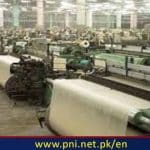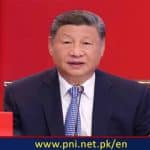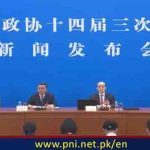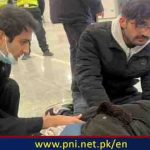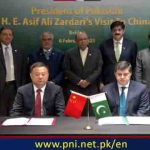BEIJING, Aug 3 (APP): Pakistan Ambassador to China, Moin-ul-Haque Thursday said that building high-quality infrastructure and enhancing connectivity and regional integration would be prioritized in the second phase of China Pakistan Economic Corridor (CPEC) development.
The first phase of the CPEC was about fixing the “hardware” side of development, and the upcoming second phase would upgrade the “software” of development by focusing on agriculture, science and technology, skill development, innovation, industrialization, economic growth, health, and education, he told Global Times on the development of the flagship project of the Belt and Road Initiative (BRI).
In that context, Pakistan and China would hold regular meetings of the CPCE’s Joint Working Groups (JWGs) to evaluate and review progress made by each side in relevant fields. This would enable us to attain desired results expected from CPEC.
While assessing the overall impact and achievements of the CPEC on Pakistan’s economy and development, he said that CPEC marked a new phase in China-Pakistan relations by placing economic cooperation and connectivity at the center of the bilateral agenda.
“This year, as we celebrate the CPEC’s 10th anniversary, it is an opportune time to review and reflect upon its achievements and successes,” he added.
Ambassador Haque remarked that the CPEC has been a “game changer” transforming the economic landscape of Pakistan. It has helped Pakistan to develop and upgrade its transport and communication infrastructure and address our essential energy needs. A network of highways and motorways has provided more reliable China-Pakistan connectivity across the Karakoram Mountains and smoother inland communications.
Around 50 projects under the CPEC have been completed with a total investment of approximately $25 billion. The creation of over 200,000 jobs through these projects has helped Pakistan to improve livelihoods and reduce poverty, leading to the economic empowerment of its people, he added.
He said that the CPEC has seen the success of important early harvest projects and has now entered into its second phase which is even more promising as it broadens the scope of cooperation and focuses on socio-economic development, science and technology, agricultural cooperation, and industrialization.
While identifying specific sectors which benefited the most from the CPEC, he said that fully aligned with the national development agenda of Pakistan, the CPEC is the key to our socio-economic development and is an excellent example of an open, coordinated, and inclusive development paradigm that benefits all parts of the country and all segments of the society. Governed by the Cooperation Framework, the CPEC is supported by four pillars: Gwadar Port, energy, transport infrastructure, and Industrial Cooperation.
Ambassador Haque said that construction of Gwadar Port is a key CPEC Project, and is now operational and ready to serve as a hub for trade and investment. Phase I of the Gwadar Free Trade Zone has been completed. In order to support these economic activities, Prime Minister Shehbaz Sharif inaugurated the Eastbay Expressway in June 2022. In a few months’ time, the Gwadar New International Airport (GNIA) will be inaugurated.
“We are confident that all these projects will lend a fresh impetus to the high-quality development of Gwadar Port in the coming years,” he added.
Ambassador Haque said that similarly, the energy cooperation, under the CPEC has been satisfactory. Thirteen new energy projects have been completed, injecting 8,000 MW of electricity into the system, boosting industrial output, and thus contributing to steady economic growth.
He said that transport infrastructure cooperation, under the CPEC, has also achieved significant progress. Signature projects like the KKH-II (Havelian-Thakot), the Peshawar to Karachi Highway (Sukkur-Multan), and the Lahore Orange Line are fully operational. Both sides are also committed to implementing the ML-1 railway and Karachi Circular Railway (KCR) projects, once matured.
Ambassador Haque said that industrial cooperation, under the CPEC is pivotal for the second phase of its high-quality development. In 2022, both sides signed the CPEC Framework Agreement on Industrial cooperation. The Special Economic Zones (SEZs), being developed under the CPEC, are aimed to rejuvenate Pakistan’s industrial sector and further spur economic development.
Socio-economic development cooperation, under the CPEC, has also achieved remarkable progress. So far, 27 projects in six areas of agriculture, education, health, poverty alleviation, energy, and professional training have been implemented leading to an improvement of people’s livelihoods, he added.
On Pakistan’s role in the broader context of the BRI and its potential to foster regional economic integration and connectivity, he said that Pakistan considers the historic BRI is a win-win proposition aimed at bringing shared prosperity for humankind.
It has emerged as a new model for deepening regional connectivity and economic integration among partner countries.
The BRI provides a strong impetus for a wave of globalization by boosting bilateral and multilateral trade and foreign direct investment projects, he added.
He said that through a network of various corridors, the BRI is reshaping the geo-economics of the participating countries and has become a beacon of hope for them.
The BRI has also significantly contributed to stabilizing supply chains along the route while promoting a culture of economic resilience through industrialization, creation of jobs, entrepreneurship promotion, innovation, and advancing technology, he added.
Follow the PNI Facebook page for the latest news and updates.



